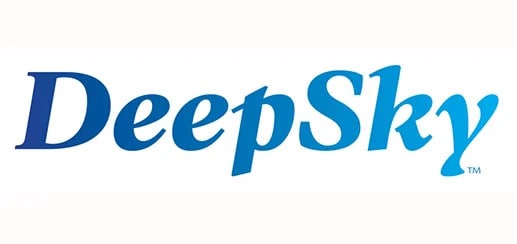Today’s Warehouse Operators Benefit from Robotics and Automation
Logistics managers and warehouse operators are exploring the use of automation and robotics to solve common issues like labor gaps and accuracy inconsistencies. Without adding more people to work in your warehouse, you can test new technologies to assist with sorting, retrieving, transporting, and other tasks.
Here’s an overview of the types of robots that work in warehouses today and how to integrate them into your warehouse alongside employees and existing systems.
What is the Impact of Robotics and Automation in Warehousing?
The impact of robotics and automation in warehousing is becoming increasingly prominent, offering various benefits that can also be leveraged by small and medium-sized businesses (SMBs). Here’s a breakdown of the impact and how SMBs can harness these advancements:
- Efficiency and Cost-Savings: Robotics and automation are known to increase efficiency within warehouses significantly. Automated warehousing systems enable real-time monitoring and management of inventory, reducing the margin of error caused by manual handling.
- Improved Warehouse Operations: Automation in warehousing has evolved to include collaborative robotics, which can seamlessly integrate with human workflows. This not only enhances efficiency but also helps in maintaining an organized warehouse management system.
- Customer Satisfaction: Automated warehousing can increase customer satisfaction by ensuring accuracy in order fulfillment. The precise tracking and handling of products reduce the chances of incorrect shipments or misplaced orders, thereby retaining customer trust and loyalty.
What are Warehouse Robotics?
Warehouse robotics refers to automating manual tasks traditionally carried out by humans within a warehouse setting. This automation is achieved through the use of robots, which are designed to handle repetitive, dangerous, or dirty tasks, making warehouse operations more efficient and less reliant on manual labor.
What are the Types of Warehouse Robots?
Various types of robots find applications in warehouses depending on the specific operational needs:
- Autonomous Mobile Robots (AMRs): AMRs are highly versatile and can autonomously navigate around the warehouse. They are used for transporting goods from one point to another, making them particularly useful in industries like automotive and pharmaceuticals, where they transport materials to and from production floors.
- Automated Guided Vehicles (AGVs): Initially popularized by companies like Kiva Systems (now Amazon Robotics), these robots follow predetermined paths to move goods within a warehouse. They are instrumental in e-commerce warehouses for picking and transporting items to packing stations.
- Robotic Storage and Retrieval Systems: These robots automate the inventory process by retrieving items for shipment and returning products to their correct storage places. They consist of robotic arms, cranes, shuttles, vertical lift modules, and unit loads, all integrated with warehouse management software to ensure seamless operations.
What are the Benefits of Warehouse Robotics?
Warehouse robotics significantly enhance operational efficiencies by automating mundane, repetitive tasks, freeing human resources for more strategic, creative endeavors. Here are some tangible benefits:
- Increased Productivity: Robots excel at performing routine functions swiftly and with precision, thus boosting productivity.
- Improved Accuracy and Efficiency: Autonomous robots, such as Automated Mobile Robots (AMRs), are adept at sorting and moving inventory accurately, reducing errors, and improving overall efficiency.
- Cost Savings: By reducing labor-intensive tasks, warehouse robotics can significantly reduce operational costs. For instance, Automated Guided Vehicles (AGVs) can operate around the clock at the exact cost, reducing labor costs and improving efficiency.
- Daily Inventory Management: Robotics can also aid in daily inventory cycle counts, ensuring accurate, real-time inventory data.
What is Warehouse Automation?
Warehouse automation encompasses using technology to streamline the movement and management of inventory with minimal human intervention. The automation can range from mechanical systems moving products to software applications tracking inventory across facilities.
What are the Key Components of an Automated Warehouse?
Warehouse automation, when implemented effectively, can offer a multitude of benefits to small businesses:
- Increased Efficiency: Automation accelerates the pace of warehouse operations, reducing the time taken to complete tasks and enhancing overall efficiency.
- Cost Reduction: By minimizing manual labor and optimizing operations, warehouse automation can significantly reduce operational and fulfillment costs.
- Error Minimization: Automated processes are less prone to errors than manual operations, ensuring higher accuracy and reliability.
- Scalability: Automation allows for scalability, enabling businesses to quickly adapt to changing demand, especially during peak seasons, without hiring additional staff.
- Improved Inventory Management: Real-time tracking and data analytics enable better inventory management, reducing carrying costs and the likelihood of stockouts or overstocking.
What are the Benefits of Warehouse Automation?
Warehouse automation, when implemented effectively, can offer a multitude of benefits to small businesses:
- Increased Efficiency: Automation accelerates the pace of warehouse operations, reducing the time taken to complete tasks and enhancing overall efficiency.
- Cost Reduction: By minimizing manual labor and optimizing operations, warehouse automation can significantly reduce operational costs.
- Error Minimization: Automated processes are less prone to errors compared to manual operations, ensuring higher accuracy and reliability.
- Scalability: Automation allows for scalability, enabling businesses to easily adapt to changing demand, especially during peak seasons, without the necessity of hiring additional staff.
- Improved Inventory Management: Real-time tracking and data analytics enable better inventory management, reducing carrying costs and the likelihood of stockouts or overstocking.
- Competitive Advantage: In a competitive market, having an automated warehouse can provide SMBs with a competitive edge by enabling quicker, more reliable customer service.
Best Practices for Implementing Automation in Warehousing
To get the most out of automation in warehousing while minimizing risks, it takes careful planning and adhering to best practices, such as:
- Selecting the right automation technologies: Assess the different automation technologies accessible on the market and pick the ones that best line up with your stockroom’s necessities and goals. Consider factors like versatility, compatibility, and return on investment potential when choosing automation solutions.
- Planning for seamless integration with existing systems: Make sure that the new automation systems work well with the equipment, processes, and warehouse management systems (WMS) that are already in place. Direct, careful testing and approval are needed to limit disruptions during the execution stage.
- Investing in employee training: Provide warehouse staff with extensive training programs to familiarize them with new automation processes and technologies. Engage workers to adjust to change and use automation tools effectively to enhance efficiency and productivity.
- Prioritizing safety and risk mitigation measures: Carry out safety conventions and risk mitigation measures to safeguard laborers and resources while deploying automation solutions. Risk assessments and audits should be carried out regularly to identify potential dangers and promptly address them.
- Monitoring and continuous improvement: Establish monitoring mechanisms to track the performance of automation frameworks and recognize areas for improvement. Lay out feedback loops and continuous improvement processes to enhance automated work processes and adjust to evolving business needs.
Thus, warehouses can boost productivity, efficiency, and competitiveness in their operations by following these best practices and implementing automation technologies successfully.
The Future of Small Business Warehousing!
As technology continues to evolve, the future for small businesses in warehousing looks brighter than ever. Robotics and automation are not just for giant corporations anymore; they’re becoming more accessible and cost-effective for smaller operations. We at Warehousing And Fulfillment are committed to helping you navigate it. We specialize in connecting you with the best solutions for your unique needs.
Take advantage of the future of warehousing; let us help you make an informed decision. Fill out our quote request form today and get one step closer to revolutionizing your small business warehousing operations.
FAQs about Warehouse Robotics and Automation
What Robots Work in Warehouses?
Various robots work in warehouses to streamline operations; common ones include Automated Guided Vehicles (AGVs), Autonomous Mobile Robots (AMRs), aerial drones, and Automated Storage and Retrieval Systems (AS/RS), each offering unique benefits in transporting, sorting, and managing inventory efficiently.
What is the Role of Automation in Warehouse Management?
Automation in warehouse management plays a pivotal role by enhancing efficiency, reducing human errors, and speeding up fulfillment processes through mechanical systems and software applications like Warehouse Management Systems (WMS).
Can a Warehouse be Fully Automated?
Yes, a warehouse can be fully automated, utilizing robotics and software systems to manage inventory, fulfill orders, and do other warehouse jobs without needing people to do much.

















